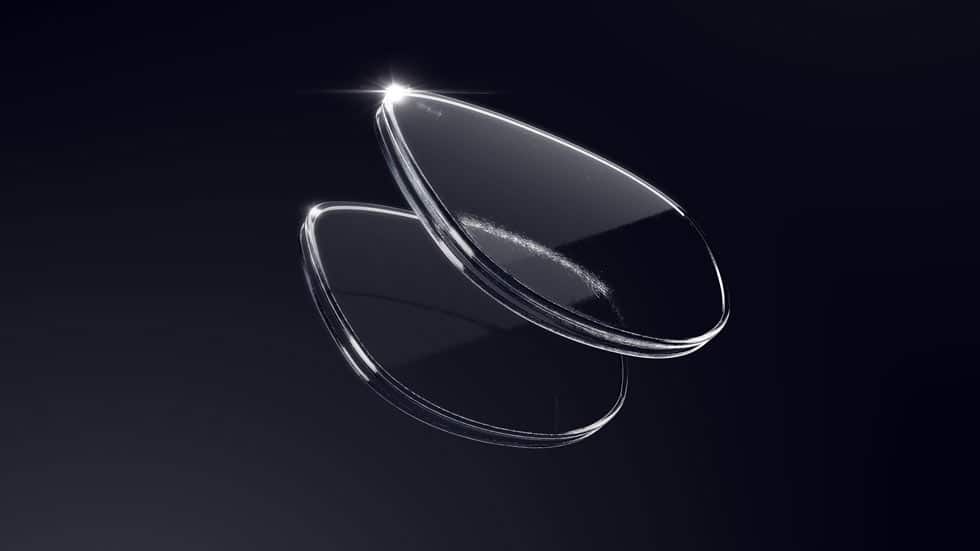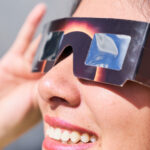 Choosing glasses can seem daunting. With so many options on the market, it can sometimes be hard to know where to start.
Choosing glasses can seem daunting. With so many options on the market, it can sometimes be hard to know where to start.
Your frames should fit comfortably and measured correctly with your face shape. Take into consideration whether you would prefer plastic or metal frames. Durability, weight, and lifestyle all play a part in your choices too – do you play a lot of sport or have small children to contend with?
Then there is style. There are styles to suit any taste with so many unique and fashionable frames available and not just from the opticians.
Which brings us on to the lenses – the fanciest frames are no good to you if your lenses are not correcting your vision. So here we have broken down the key features to consider when choosing your lenses.
How To Choose Your Glasses Lens Type
It seems obvious, but there are several choices here. To be completely accurate, get the most up-to-date prescription that you can. You need to have your eyes tested every two years, so if you are looking to purchase a new set of glasses, book to have your eyes tested prior to purchase, particularly if the two-year limit is nigh.
Based on your prescription, you can then decide which lenses type you need;
Single Vision Lenses
Lensology supply all three types of lenses available for single vision wearers.
Distance correcting lenses or Everyday Lenses – worn by approximately one-third of the UK population to correct Myopia or short-sightedness as it’s more commonly known. These lenses are typically worn for driving, watching television, and everyday wear as required by the patient.
2. Near vision lenses – prescribed for the correction of hyperopia or hypermetropia – better known as long-sightedness, patients needing help to see objects close up, for reading, and so on would use these lenses. This kind of eye condition is typically more prevalent in patients over forty but can be present at any age, for which Lensology can cater.
3. Intermediate lenses are less standard than the near and distant versions but still a popular choice for computer users and those who are spending long periods at desks or a workstation needing correction for mid-range vision issues. Mid-range is typically classed as an arm’s length away.
Varifocal Lenses
Varifocal lenses are a multi-functioning lens, combining near, mid, and long-range distance vision correction for patients. Specifically designed for enhanced and consistent clarity in one lens, the varifocal is a level up from the bifocal and can take a little longer to get used to, but with fantastic results. Patients that choose a varifocal lens can expect an increased level of freedom, needing only one pair of glasses for sports, day to night, and walking to driving.
Lensology supply three levels of varifocal with the Digital (Good), Pro-Series (Better), and Omni-Vision HD (Best) available.
Bifocal Lenses
Known as the more traditional multi-prescription lens, bifocal lenses combine two distances in one lens. Usually separated by a horizontal line through the middle of the lens or as a D shape segment at the bottom, the top half corrects long-sighted vision prescriptions. The bottom corrects near-sighted needs.
In years gone by, the bifocal has been a thick and clunky lens and not particularly attractive. Advances in optical technology have meant that lenses are now available in a range of thicknesses, with Lensology offering the thinnest on the market at 1.74 index (we will come to this later).
Transition Lenses
Transition lenses are photochromic, which means they react to UV light. As soon as they hit UV light, the lenses transition to a dark colour to protect the eyes and fade back to clear when the danger is no longer present. A great alternative to sunglasses for those who need to protect themselves from even the smallest amounts of UV light and for wearers who regularly go in and out, conveniently protecting eyes without having to change glasses every time. With UV rays present indoors and outdoors, they are a multipurpose solution for UV protection. Lensology supply the highest performing transition lenses in the market with their Transitions Signature Gen8 range that comes in brown, grey, and graphite green.
Blue-Light Lenses
A more recent addition to the market, blue-light vision issues are prevalent in continued and excessive screen time, be that gaming, work, television, and smart devices. The blue light is the most dominant light emitted from the screen and the closest in frequency to UV, making it the most harmful. As our digital world grows, so does our time spent in front of screens, and so the need to protect ourselves from eye strain, eye rubbing, and other related health complaints that present themselves. Lensology offers a range of digital-related treatments for lenses to suit your lifestyle, including blue light lenses.
How To Choose Your Glasses Lens Coatings
Once you have chosen your fit for purpose lens, it’s time to decide what coatings and protection you need. You may not need or want all the options available to you; your lifestyle and purpose for the glasses will help you determine this.
A typical list of coatings and tints available;
Scratch resistance – available in a range of levels- is a must-have for the peace of mind it delivers!
Anti-Fog – prevent your glasses from fogging up when wearing a face mask.
Anti-glare – perfect for driving and screen time, anti-glare performs as a safety feature, especially when driving at night.
Easy clean – dirt repelling coating for your lenses; they become less dirty throughout the day, meaning less cleaning and better results when you do.
Ultra-Violet block – blocking the harmful UV rays present throughout the day from your eyes.
Anti-smudge – whether you are a face toucher or have little ones with sticky fingers, touching your lenses is unavoidable. Anti-smudge will lessen the need for constant cleaning and limit the need for impromptu jumper cleaning.
Coloured lenses – many glasses wearers are sensitive to colour and light variations and find a different coloured lens more comfortable. There is a wide range of colours available, and the expert team at Lensology can take you through the options of these and any other requirements you have.
Our lens advice
As mentioned in bifocals, traditionally, lenses were thicker the more technical they got or, the cheaper they were, often heavy and clunky for the wearer and not particularly attractive!
Fast forward, and now there is a wide range of thicknesses available. Using the lens index as a guide, 1.5 index is the thickest and 1.74 is the thinnest. The higher the prescription, the higher the lens index number necessary to achieve attractive results – the lower the prescription, the lower the index necessary to achieve decent aesthetic results.
The thinner the lens, the higher the cost is the usual rule of thumb and this is due to the advanced manufacturing involved when producing a higher index more complex prescription lens. Lensology supply a range of thicknesses for all their lenses, Single-Vision, Bifocals and Varifocals are all available in the thinnest index which is 1.74. At 45% slimmer & Lighter than the standard 1.5 Index, you will certainly see and feel the difference.
Once your lens type has met your prescription needs, it is about preference. There is a lot to think about but giving yourself time to go through the options carefully and choosing the best coatings, tints, and variations for your needs will result in optimum comfort and performance. For more information, speak to the friendly, expert team at Lensology.






